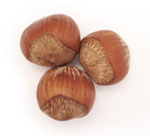Child Paracetamol Dosages Updated
Posted by: admin on: January 3, 2012
The UK’s drug regulator has issued new dosage guidelines for children’s liquid medicines such as Calpol and Disprol. The new, age-specific guidance stipulates exact doses of liquid paracetamol medicines that should be given to children, doing away with the ranged doses currently in use. The guidelines also introduce seven narrower age bands covering children from 3 months to 12 years.
-Team@CMHF
- The new guidelines, issued by the Medicines and Healthcare Products Regulatory Agency (MHRA), will be introduced to medicine instructions and labels by the end of the year.
- The MHRA says that parents should follow the dosing instructions included with the medicine, and add that continuing to follow the older dosing guidelines (if these accompany the product) will not harm their child.
- The doses have been updated to more precisely define how much paracetamol should be given to children of different ages, and not because of any safety concerns over the currently recommended doses.
- The agency says that despite the changes, liquid paracetamol remains a safe and effective way to treat pain and fever in children over the short term.
- They stress that parents should not be concerned about the doses of liquid paracetamol they have given their children in the past, as following the old instructions will not have caused harm.
What are the new doses?
Doses for children’s liquid paracetamol were previously defined based on three age groups:
- 3 months to under 1 year: 2.5ml of infant paracetamol suspension, given up to four times a day
- 1 year to under 6 years: 5 to 10ml of infant paracetamol suspension, given up to four times a day
- 6 years to 12 years: 5 to 10ml of paracetamol six-plus suspension, given up to four times a day
However, these old dosage recommendations are now being replaced by new ones that classify children into seven more precisely defined age groups:
- 3 months to 6 months: 2.5ml of infant paracetamol suspension, given up to four times per day
- 6 months to 24 months: 5ml of infant paracetamol suspension, given up to four times a day
- 2 years to 4 years: 7.5ml of infant paracetamol suspension, given up to four times a day
- 4 years to 6 years: 10ml of infant paracetamol suspension, given up to four times a day
- 6 years to 8 years: 5ml of paracetamol six-plus suspension, given up to four times a day
- 8 years to 10 years: 7.5ml of paracetamol six-plus suspension, given up to four times a day
- 10 years to 12 years: 10ml of paracetamol six-plus suspension, given up to four times a day
The existing three-dose levels can still be used by parents, although the upcoming dosing is simply more exact and easier for parents to follow.
Has the medicine been changed in any way?
No, the strength and ingredients of the medicines have not changed:
- Infant paracetamol suspension still contains 120mg of paracetamol for every 5ml of suspension
- Paracetamol six-plus suspension still contains 240/250mg of paracetamol for every 5ml of suspension.
The recommended age ranges for infant and six-plus formulas remain unchanged, meaning children under six years old should still be given infant paracetamol suspension and children aged six and above should still take six-plus formulations.
Why has dosing changed?
- The MHRA says that the updated dosage guidelines are designed to ensure that children get the most effective amount of paracetamol, and that the medicine is given in the best way possible.
- The changes have not been made due to any safety concerns, and parents or carers should not be concerned about using the old dosages in the past.
- While paracetamol dosing in hospitals and healthcare settings is based on the child’s weight, the MHRA dosage advice for paracetamol given at home is based on the child’s age.
How can I make sure my doses are accurate?
- The new guidelines not only update dosing recommendations, but also encourage parents or carers to use the dosing spoon provided with the medicine to ensure that the correct amount of medicine is given to children.
- The MHRA suggests that parents and carers always use the dosing spoon, measuring syringe or cap that accompanies the product, and not a regular tablespoon to estimate the correct amount.
- They also recommend you thoroughly shake the bottle before giving your child the dose to ensure that the paracetamol is evenly distributed within the liquid.
For further reading log on to
http://www.nhs.uk/news/2011/11November/Pages/new-child-calpol-paracetamol-doses.aspx
Search
- drchasrani: Difficult to get such a data, authenticated at that. Try Times of India online library
- rakesh pore: hi, where can i get genuine information about "10 most common drugs sold in india?" i want it for a local project
- nilesh dutta: sir, Plz give detail about MBA Sports Management Thanks and Regards


Leave a Reply